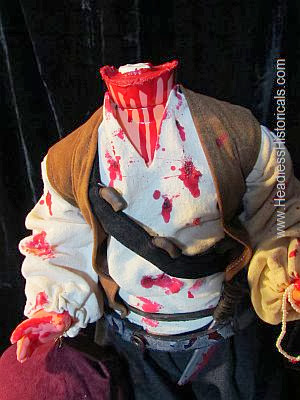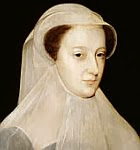MARIE ANTOINETTE
Born in 1755, Marie would grow up to become a symbol of extreme extravagance. The daughter of the Empress of Austria, Marie was married at age fifteen to the French dauphin Louis XVI. In 1774 she became Queen of France when her husband inherited the throne.
To ease the boredom of French royal life and the marital neglect she suffered, Marie surrounded herself with young friends and dove into a life of pleasure, hosting lavish parties and theatrical events and wearing outrageously expensive gowns and hairstyles. Scandals surrounded her activities, and her wild spending was ruinous as the common people fell deeper and deeper into financial despair.
Revolution soon followed and the royal court was overthrown. Both Marie and her husband were tried for crimes against their country. Although tried separately and months apart, they were both were found guilty and sentenced to death. On October 16, 1793 the former Queen was hauled alone in a dilapidated cart to the scaffold in Paris where she was beheaded by the guillotine.
ABOUT THE DOLL
Marie is a reworked large vinyl doll who stands 23" tall. She is dressed in a beautiful full-length gown of white patterned satin brocade over a lace-trimmed powder blue satin underskirt. The sides of her gown opening are trimmed with lace and blue ruffle with delicately hand-sewn golden beads and faux pearls. Her dress is edged with blue braid trim and lace and adorned with small ribbon bows and flowers.
Around what is left of her neck is a white satin ribbon choker with a large pendent and a string of faux pearls with a small heart-shaped ornament. She wears a beautifully styled blonde wig with feathers, flowers, and pearl hair ornaments. She also wears several beaded bracelets on her wrist.
Her face is hand-painted in a porcelain tone with brightly colored lips and small black decorative patches, as was fashionable during the height of her royal days, and her severed head is attached to her hand. Her large eyes are clouded over in a death-stare. The neck stump and above the shoulders are both cut cleanly to resemble the wound inflicted by the guillotine. Blood, spinal column bone, and muscle tissue is visible from both wounds.
This doll does not have bendable parts and was made to be displayed in a standing position.
See all the Headless Historicals dolls for sale on Etsy.com




























